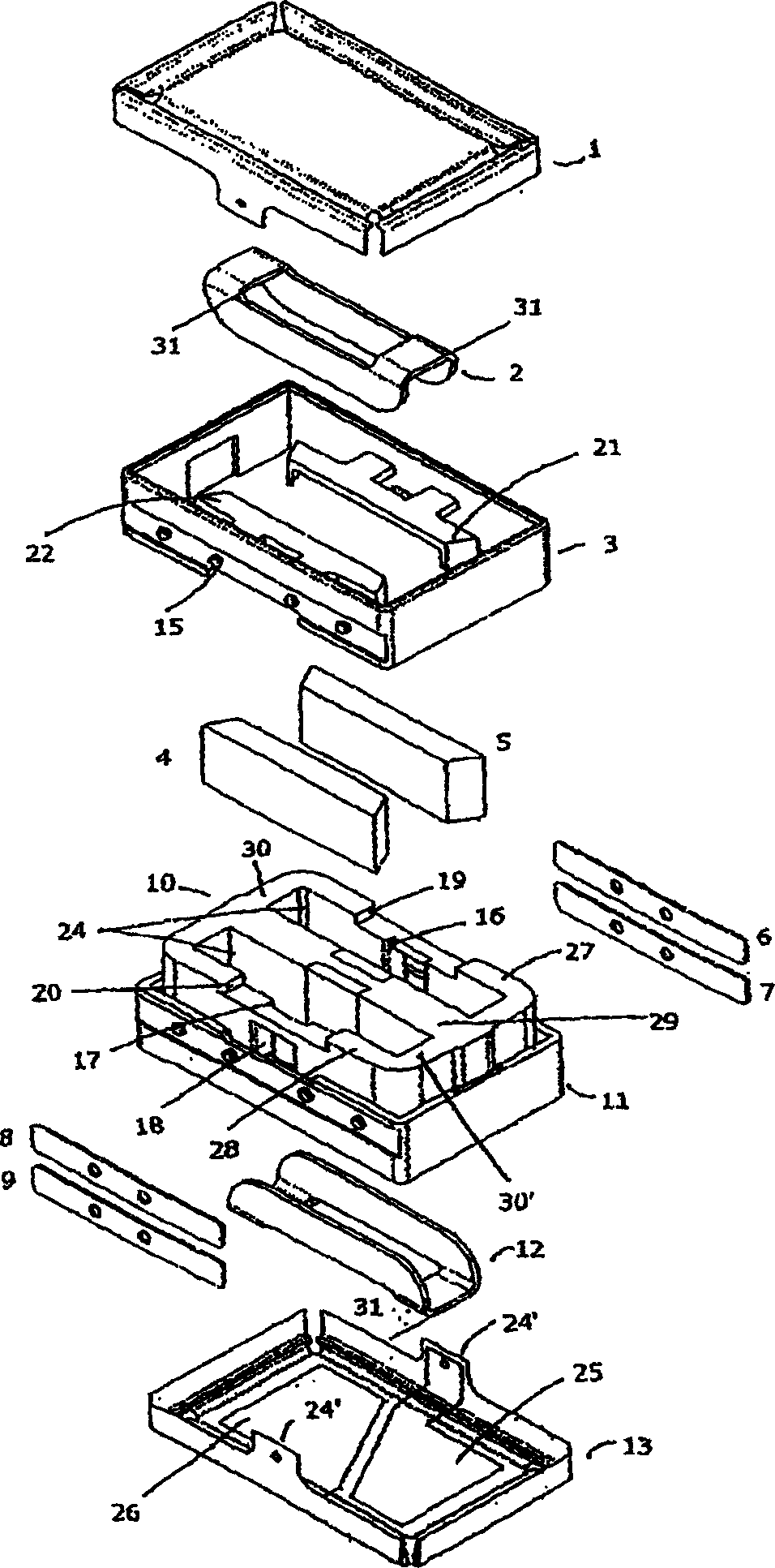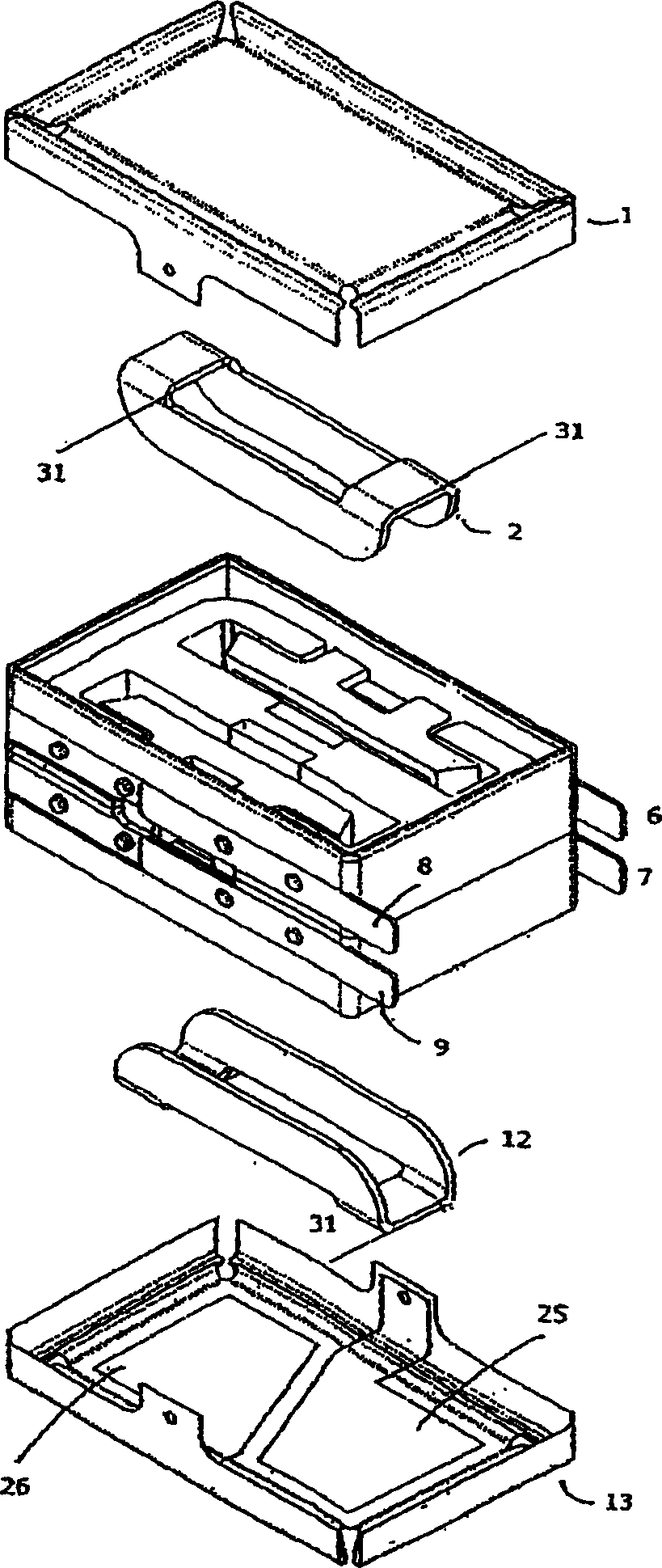An electro-acoustic transducer with two diaphragms
A technology of sound converters and converters, applied in the direction of transducer housings/cabinets/brackets, sensors, hearing aids, etc., can solve the problems of cumbersome design, distortion, and speakers that are not suitable for small designs, and achieve high efficiency.
- Summary
- Abstract
- Description
- Claims
- Application Information
AI Technical Summary
Problems solved by technology
Method used
Image
Examples
Embodiment Construction
[0050] Figure 1-3 An electromotive power converter is shown and has the main components: magnetic circuit 10, first coil 2, second coil 12, first diaphragm 1, second diaphragm 13 and four connections 6-9.
[0051] Such as figure 1 As shown, the electromotive power converter according to the invention comprises two diaphragms 1, 13 and two coils 2, 12, and has a common magnetic circuit. The two diaphragms mentioned above are driven by two modes of operation, either same polarity or opposite polarity. If the two diaphragms are driven in the same direction in response to an input electrical signal, the transducer is driven by a so-called vibration mode. Vibrate mode induces maximum vibration, but no sound output. If the two diaphragms are driven in opposite directions, there will be maximum sound output and the transducer is free to vibrate. Terminals 6, 8 are in electrical contact with coil 2 and terminals 7, 9 are in electrical contact with coil 12. The contact between th...
PUM
 Login to View More
Login to View More Abstract
Description
Claims
Application Information
 Login to View More
Login to View More - R&D
- Intellectual Property
- Life Sciences
- Materials
- Tech Scout
- Unparalleled Data Quality
- Higher Quality Content
- 60% Fewer Hallucinations
Browse by: Latest US Patents, China's latest patents, Technical Efficacy Thesaurus, Application Domain, Technology Topic, Popular Technical Reports.
© 2025 PatSnap. All rights reserved.Legal|Privacy policy|Modern Slavery Act Transparency Statement|Sitemap|About US| Contact US: help@patsnap.com



